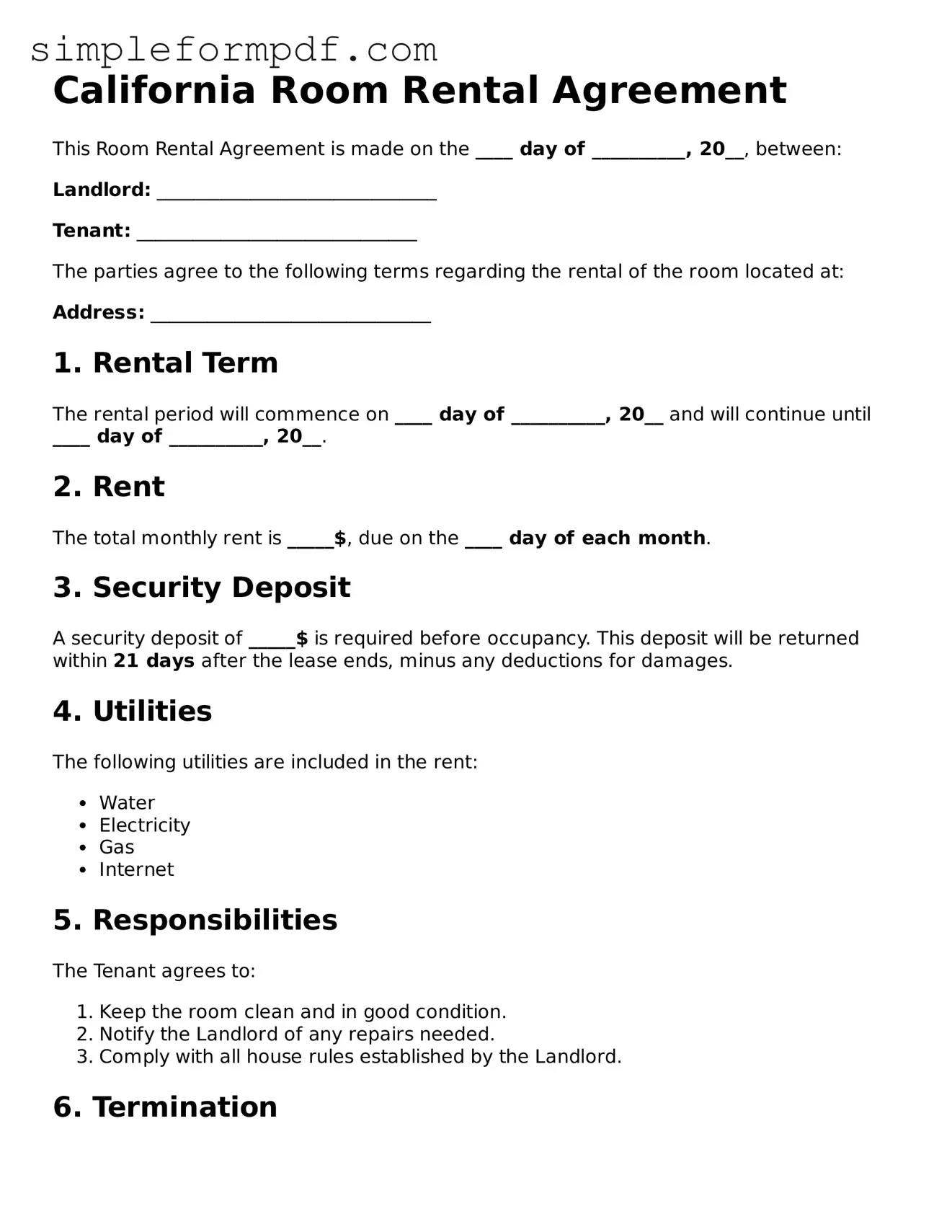California Room Rental Agreement
This Room Rental Agreement is made on the ____ day of __________, 20__, between:
Landlord: ______________________________
Tenant: ______________________________
The parties agree to the following terms regarding the rental of the room located at:
Address: ______________________________
1. Rental Term
The rental period will commence on ____ day of __________, 20__ and will continue until ____ day of __________, 20__.
2. Rent
The total monthly rent is _____$, due on the ____ day of each month.
3. Security Deposit
A security deposit of _____$ is required before occupancy. This deposit will be returned within 21 days after the lease ends, minus any deductions for damages.
4. Utilities
The following utilities are included in the rent:
- Water
- Electricity
- Gas
- Internet
5. Responsibilities
The Tenant agrees to:
- Keep the room clean and in good condition.
- Notify the Landlord of any repairs needed.
- Comply with all house rules established by the Landlord.
6. Termination
Either party may terminate this agreement with 30 days' written notice prior to the end of the rental term.
7. Governing Law
This agreement will be governed by the laws of the State of California.
8. Signatures
Both parties agree to the terms of this Room Rental Agreement by signing below:
Landlord Signature: ______________________________ Date: __________
Tenant Signature: ______________________________ Date: __________
